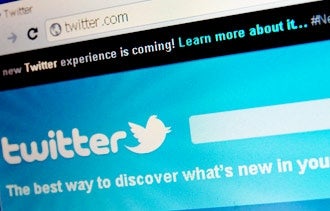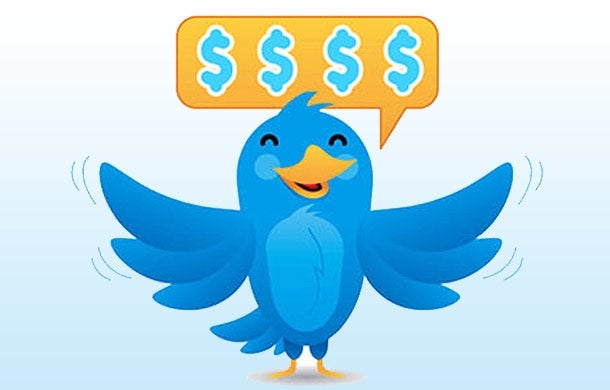Social media is one of the hottest trends on the Internet today. No matter who you are or what you do, chances are you use social media in some way. If you are involved in some type of online business, you definitely have to make use of social media. If you aren’t, then you are missing out on everything that social media has to offer.
That being said, there is a lot more to social media than just posting updates on Facebook or Twitter. Although these two are certainly tremendously useful platforms that can help your business in numerous ways, it shouldn’t end there. Here are a few tips on how to leverage the vast power of social media to benefit your online business.
Bring out the best in others — There is only so much mileage you can gain from giving properties to yourself. If you spend more time talking about other people rather than yourself, you have a much better chance of attracting the interest of a broader group of people. Never hesitate to showcase the best of other people. It’s good karma, and your readers will definitely appreciate you because of it.
Get ideas from the best of the best — Not all your posts have to come from you. Of course, you will still have to generate original content on your social media sites, but drawing from the thoughts and idea of recognized authority figures will help you come up with fresher and more engaging content.
Go beyond mobile — Don’t just focus on providing content for the mobile crowd. While more and more people are accessing the Internet from mobile devices these days, there are still a substantial number of people who use desktops and laptops. Make sure your content is accessible to people using non-mobile devices, and you will reach a wider audience.
Be yourself…no really — Everyone knows the importance of staying true to oneself on social media, but there are many who don’t actually take this to heart. Because of insecurity and other reasons, many people tend to “put on a mask” when dealing with social media. Be yourself and don’t try to be something you’re not. It’s much easier to remain consistent this way, and you will be rewarded by an army of loyal followers who will hang on your every word.
Paint a thousand words — The value of pictures on social media simply cannot be overestimated. People will be more likely to stop and check out your post if a picture first grabs their attention. Pictures also help break up a page and prevent your readers from falling prey to text fatigue.
Build it…then get ready for when they come — Many people think getting a social media site together is all the work that needs to be done. In many ways however, it is just the start. If you build it, they will come, and you have to be ready for when they do.
Media instead of surveys — For purpose of gauging your market performance, surveys can be very flattering. Unfortunately, the results of surveys aren’t always accurate. By focusing more of your attention into social media and when and how people are talking about you, you will have a much more accurate and broader picture of what areas you are strong in, and which ones you will need to bolster.
Find out where it hurts — Although getting negative feedback is never a good thing, you do have to find out where the backlash is coming from and what you can do about it. By doing so, you maybe able to address the root problem at the core and offer concrete solutions.
Spread the love — Many of the followers that you will attract have their own stories to share as well. By retweeting your visitors’ posts, you not only help pull in more visitors to your site, but it will give your existing audience the idea that you are totally behind every post and know how to show your appreciation when it is deserved.
Be a problem solver — People tend to gravitate toward those who can offer them useful solutions to their problems. The world has enough critics and haters; what we need is more people who can actually help. You don’t necessarily want to spend all of your time solving other people’s problems, but being there when you can and offering concrete solutions will help trigger a significant boost to your popularity.
Get in the trenches — Social media really is all about connecting with other people. Don’t just sit behind your desk and let it do all the work for you. By engaging your readers as often as possible in as many different ways as possible, you will help establish your image as an approachable human being with whom they can relate.
http://www.sitepronews.com/2013/04/19/social-media-strategies-no-one-ever-thinks-of/
Here are some ideas for using Twitter as a marketing channel:
Promote your brand by optimizing your Twitter profile.
Be sure to:
Use your logo as your profile picture.
- Use your brand name as your Twitter handle and your Twitter username.
- Use your brand name in your Twitter bio, and add a link to a white paper in your bio.
- Add your website's URL to your profile.
- Use your brand name as your hashtag and include it in all Tweets.
Generate leads by offering white papers, instructional videos, e-books and product samples if appropriate.
Write a compelling Tweet with a link to the lead generation asset. Always send visitors to a separate landing page with an opt-in form for each asset you Tweeted about. After visitors opt in to receive the asset, follow up with a series of emails that introduce them to your products and to additional white papers, videos and e-books. Track your results so you know which assets are most popular and which Tweets generate the best response. Tweets are like subject lines in your emails, so track your Tweets in a spreadsheet so you know which work best.
Promote webinars, conferences, training classes, and other events sponsored by your company.
Write Tweets that promote the events, and include a link to a landing page where customers can sign up for the events. Again, use a separate landing page for each event and track your results.
Display the Twitter logo prominently on your website and encourage people to follow you on Twitter.
Also add links to your Twitter page in your email footer, on your blogs and in your email newsletters. Constantly ask people to follow you in all your marketing materials.
If appropriate, offer discount codes in your Tweets.
Twitter has also become a very effective sales tool for both B2B and B2C businesses. In B2B sales, Twitter helps you keep your name in front of prospects when you have a long sales cycle. In B2C sales, you can Tweet promotions and coupon codes and create contests to generate sales. Here are some ideas for using Twitter for sales:
Listen!
Monitor your competitors' brand names and hashtags to see what people are saying about them on Twitter. When you see negative Tweets about their products or service, use it as a competitive selling point. Listen for positive and negative comments about your products and services as well. Engage unsatisfied customers or prospects immediately to defuse the situation. The key is to address their concerns quickly so you can turn the negative sentiment into positive sentiment publicly.
Use Twitter Search to find people using your target keywords in their Twitter profiles, hashtags, and Tweets.
They may be dissatisfied with your competitor's product and are looking for a solution to their problem. These people are potential prospects, so you should check out their profiles and follow them. After you follow them, see who they're following and keep following more potential prospects as you find them. Add your prospects to a Twitter list so it's easier for you to monitor and communicate with them.
When you have a prospect in your sales funnel, engage them in conversation publicly on Twitter.
Send them links to new white papers or videos to introduce them to new features in your products.
Hold contests to generate sales.
You could have people Tweet a picture of themselves using your product, with the winner receiving a discount on their next purchase.
Tweet coupon codes.
One of the most popular searches on Twitter Search is for "coupon codes" for specific brands or products.


















